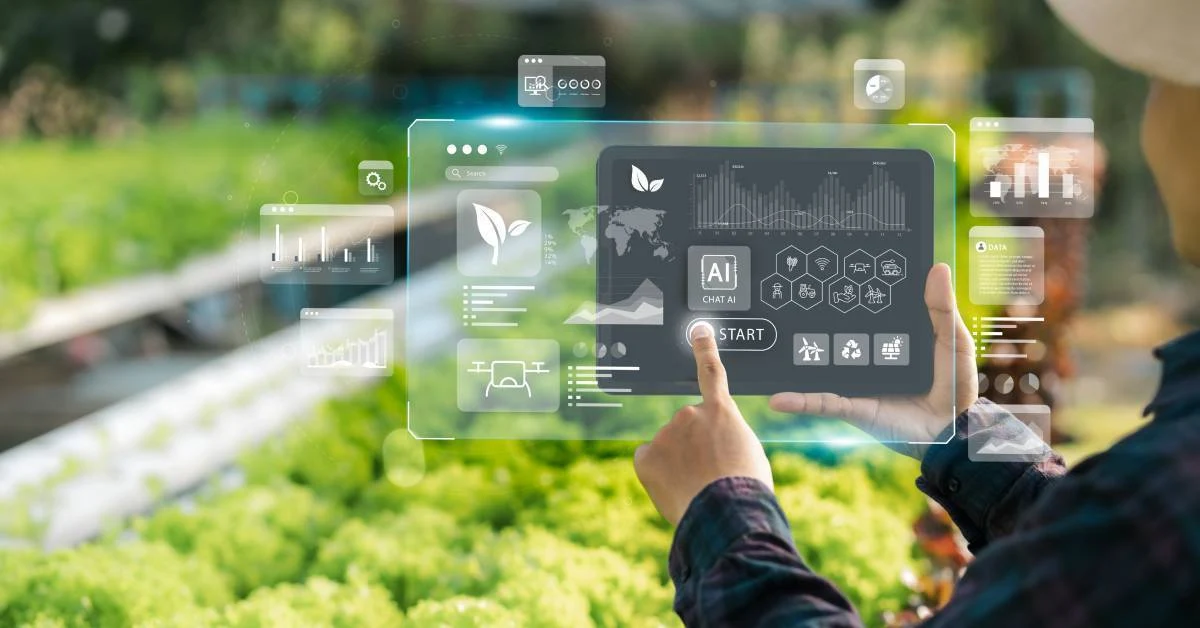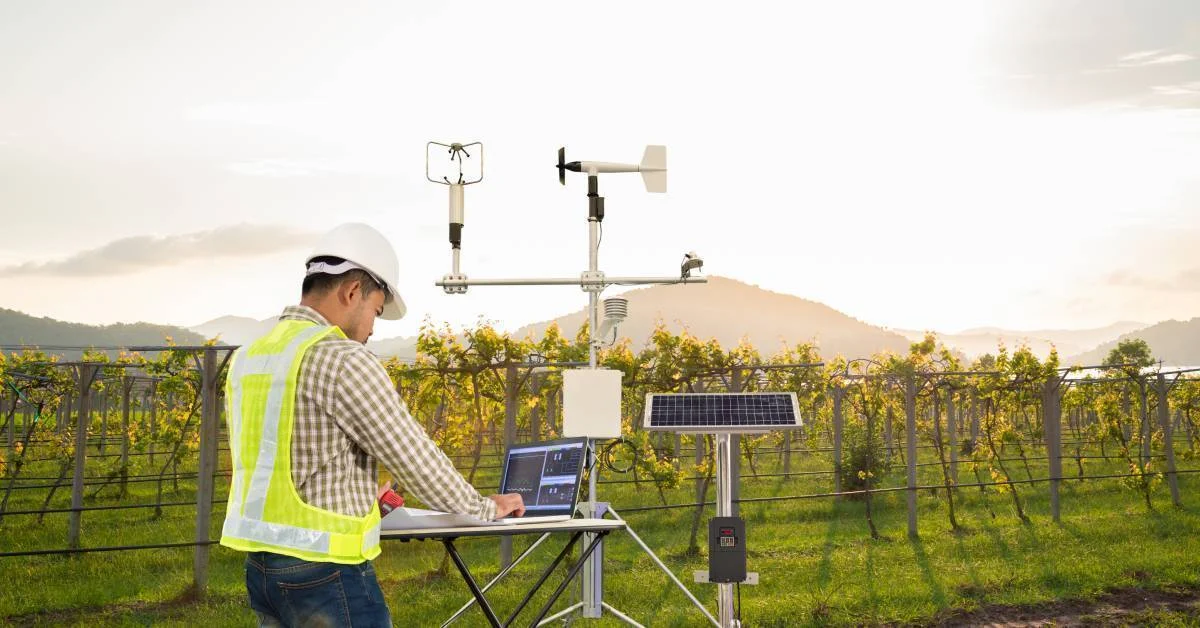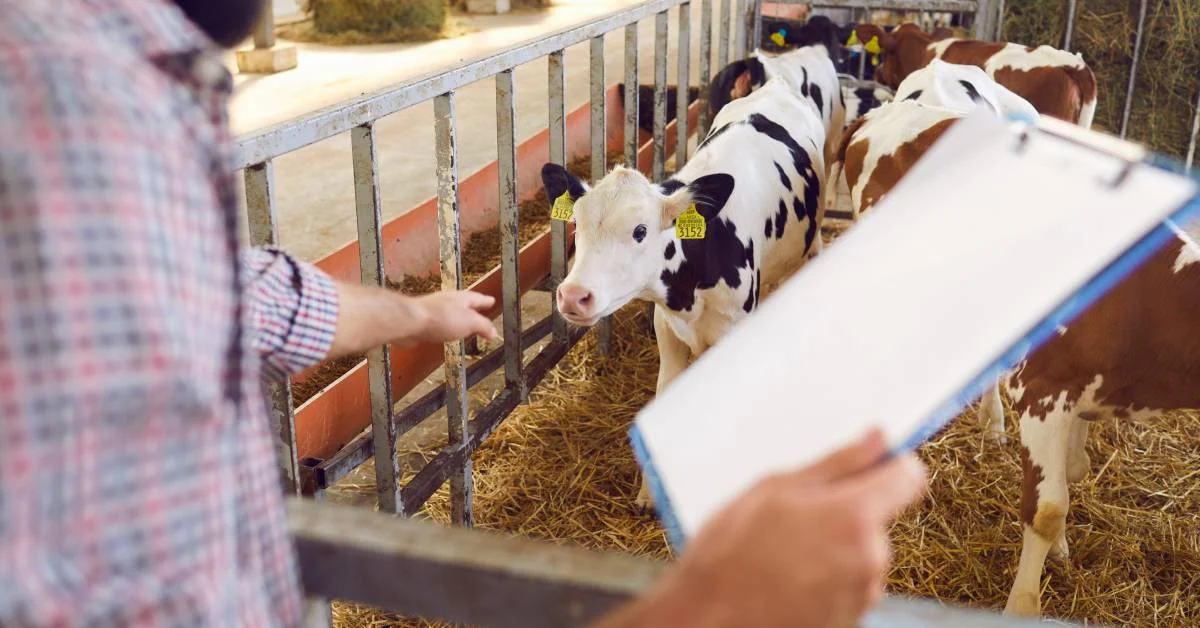In recent years, the intersection of agriculture and climate change has come under intense scrutiny, with one industry in particular drawing significant attention: cattle farming.
As global demand for meat and dairy continues to rise, so does this vital industry’s environmental footprint. From methane emissions to deforestation, the practices associated with cattle farming have profound implications for our planet’s climate stability. However, amidst these challenges lies an opportunity for change.
Continue reading this blog to discover the interplay between cattle farming and climate change and potential solutions to these dual challenges.
Cattle Farming’s Contribution to Climate Change
Cattle farming has found itself at the center of food production and environmental responsibility as the effects of climate change have become hardly ignorable.
Cattle-rearing practices are significant factors in the world’s climate, from methane emissions by grazing cattle to the impacts of deforestation due to increasing pastures.
As concerns about global warming intensify, understanding the relationship between cattle farming and climate change has become imperative.
Let’s explore how cattle farming and climate change affect each other, examining its environmental footprint and the challenges it presents for sustainability:
Methane Emissions
Cattle farming and climate change release methane gas from cows’ digestive systems. Methane is a greenhouse gas, and cows contribute to its production.
On a scale, cattle account for around 30% of all methane emissions. The type of diet, how efficiently they digest their food, and the breed of cattle can affect the amount of methane each cow produces.
Cows that eat foods like grass tend to produce methane compared to those on grain-based diets. Additionally, specific cattle breeds may generate levels of methane per unit of feed consumed.
Deforestation and Land-Use Change
Cattle farming is still a leading factor in the advancement of deforestation, even in the Amazon forest. To cater to this demand, people have turned to deforestation to create space for grazing and growing feed crops for animals.
The conversion of forests to pastures eliminates habitats and substantially impacts the climate, a significant issue. Forests are carbon reservoirs, capable of filtering out carbon dioxide (CO2) in the atmosphere through plant photosynthesis and depositing carbon in the form of trees, humus, and vegetation.
For example, if the forests are cleared to provide grazing land for cattle rearing, the carbon sequestration from the trees increases CO2 in the atmosphere, adding to the greenhouse stock.
This process also contributes to the emission of greenhouse gases, global warming, and climate change, which have been the focus of most discussions in recent years.
Moreover, deforestation will also eliminate the earth’s ability to maintain CO2 levels in the future, as this table demonstrates. Mature forests are, therefore, very potent in the uptake and storage of carbon. However, this cycle is distorted if the trees and forests are cut down.
The biological density also decreases due to deforestation and changes in the water regime, enhancing the problem of soil degradation and becoming disadvantageous to the environment in the case of deforestation.
Cattle farming is one of the world’s largest consumers of land space today. Sophisticated sources, such as the Food and Agriculture Organization of the United Nations, establish that about a third of the planet’s ice-free land area is used for livestock grazing and feed production.
Consequently, an often complex solution is needed to effectively reduce the environmental footprint of cattle farming. On a similar note, land management practices like moving around animals compared to the same area per period and planting more trees can reduce deforestation and try to reverse the situation.
More so, encouraging the use of other protein sources and decreasing overall meat consumption can lessen the burdens on land needs and curb demand for beef production.
Other Emissions
In addition to enteric fermentation emissions, cattle farming contributes to other greenhouse gas emissions, such as manure handling and animal movement.
Some of them include storage, treatment, and application of manure, which may also cause methane and nitrous oxide emissions, which are Greenhouse gases.
Further, mechanical handling of feed, water, and livestock also releases or burns carbon, primarily from fossfuell’s transport and overhead utilization.
These additional emissions are also primarily responsible for today’s spoiled environment, the impact of cattle farming, and climate change.
Other measures that will be useful to reduce such emissions and promote environmentalism in the production of animals for meat are proper handling of wastes and improved means of carrying animals.
Impacts of Climate Change on Cattle Farming
Global warming can not just stay passive while its effects worsen in several ecosystems, thus in several industries and people’s lives.
The cattle farming industry has been highly susceptible to climate change, characterized by high temperatures, irregular rainfall distribution, and increased occurrence of extreme weather conditions.
It most often extends beyond such future changes and effects shifts and engages with those of the cattle farming business. Some include changes in the incidence of coniferous fodder and disease and producer losses.
It is time to examine the effects of climatic shifts on beef cattle farming and how a susceptible and metamorphosed industry will shape itself in the continued global changes.
Let’s delve into the impact of climate change on cattle farming, highlighting the complexities and adaptations required to navigate this evolving industry:
Rising Temperatures and Heat Stress
New climatic changes, particularly heat, are a great challenge to cattle farming, mainly because of the impacts of heat stress on cattle. Heat stress can adversely affect animals’ normal functioning in the following ways.
First and foremost, it has the potential to decrease milk production in dairy cows, which could result in a financial loss for the industry’s players. Also, one effect of heat stress on beef cattle is reduced meat quality, which can compromise market price.
However, when cattle are reared under high temperatures, feed intake can decline, reproduction can suffer, and disease incidence can increase, which can adversely affect productivity and returns in cattle farming.
These are economic losses resulting from climate change effects on cattle through heat stress, and they highlight the importance of adopting measures for sustainable practices to address the impact of rising temperatures on cattle farming.
Changes in Rainfall Patterns and Droughts
Climate change impacts, such as changes in rainfall patterns, can extend drought periods or worsen their effects, reducing the water supply for cattle and fodder crops.
Droughts are usually associated with water shortages, which are terrible for animals because they lack drinking water, and the available forage is scanty and of low nutritional value. Thus, water, feed, and shade can become scarce, leading to dehydrated, malnourished, and heat-stressed cattle.
Furthermore, during droughts, the vegetation volume, which supports more animals, is reduced, and farmers are left with no other option than to look for feed from other sources or keep limited numbers of livestock.
These drought outcomes highlight the vulnerability of cattle farming and climate change and the need for special measures, such as water-sparing and drought-resistant forage crops, to mitigate the impacts of climate variation.
Increased Risk of Diseases and Pests
Weather conditions remain a natural factor that can alter the natural environment’s ecological systems, influencing the incidences, distribution, and management of diseases and pests affecting cattle breeding.
Subsequently, increased temperature and changes in the rainfall seasons lead to changes in the distribution of diseases and pest vectors and disease transmission among the livestock.
For instance, factors that lead to the expansion of ticks that cause diseases and ailments transmitted by mosquitoes could be experienced in areas that tend toward warm and wet climates.
For instance, changes in temperatures and humidity impact pests like flies and mites, which can threaten cattle’s health situation and production intensity.
Disease and pests add risks that enhance cattle farming, which contributes to disease detection and the use of vaccines and ensures biosecurity to protect the health of the cattle with weather advancements from climate change.
Strategies for Mitigating Climate Impacts and Sustainable Practices
Given that climate change is objective and global efforts to combat this issue are being enhanced, the agricultural sector is most actively seeking to minimize its environmental impact and strive to achieve sustainability.
Maintaining and reversing the effects of climatic changes are focal points due to the possibility of implementing sustainable practices in cattle rearing.
From reducing methane outputs to wisely applying innovative techniques and educating customers/end-users, improving cattle rearing and management is one of the most significant opportunities to fight greenhouse gas emissions worldwide and for a better future.
Let’s uncover the strategies and initiatives driving the transition toward a more sustainable and resilient future for cattle farming amidst the challenges of a changing climate:
Improved Management Practices
Many ways and measures can help to decrease methane emissions from cattle. However, some general methods are listed below. These feeds can be supplemented with additives like methane inhibitors or modifiers that could be incorporated into cattle diets to reduce methane production in the digestive tract.
Moreover, selective breeding processes also focus on producing cattle breeds that allegedly produce less methane per unit of feed consumption.
Afforestation, proper fertilizer use, crop rotation systems, pasture rotation, bush burning, and other sustainable land management practices can sequester carbon, prevent deforestation, and rehabilitate barren and degraded lands.
Welfare-oriented livestock production systems include operational plans for improved pasture land management, agroecological practices, and regenerative production developed over time, such as Holistic Management by the Savory Institute and the Carbon farming approach.
Here are some critical aspects of improved management practices:
Feed Additives
Methane inhibitors or modifiers in feed fed to cattle make it possible to minimize methane emission during enteric fermentation, a process where microbes in the digestive tract rumen produce methane.
Breeding Programs
Selective breeding programs have aimed to produce composite cattle with low methane emissions per feed unit. The farmer can lessen the animals’ adverse environmental effects by selecting animals with desirable traits like feeding efficiency and low methane output.
Rotational Grazing
It also prescribed grazing, providing a chance for pastures to recover, thereby improving soils, producing diversity, and sequestering carbon.
Agroforestry
Incorporating trees and shrubs into grazing lands has benefits, including providing shelter to the animals, improving the compound’s fertility, and increasing Carbon sequestration.
Reduced Deforestation
Further introducing policies aimed at curbing deforestation and land degradation – including afforestation and land management – can facilitate the conservation of crucial ecosystems and minimize GHG emissions.
Technological Advancements For Cattle Farming and Climate Change
Technological solutions for reducing cattle farming and climate change emissions are being explored. Methane-capturing devices, such as anaerobic digesters or biofiltration systems, can capture methane emissions from manure management systems and convert them into usable energy or biofertilizers.
Research and development efforts focus on developing more efficient feeding systems, methane-reducing feed additives, and precision farming technologies to optimize resource use and minimize environmental impact.
Additionally, advancements in remote sensing, data analytics, and artificial intelligence enable farmers to monitor and manage their operations more effectively, enhancing productivity and sustainability. Tools such as greenhouse management software are becoming increasingly relevant, especially for integrated farming systems that include controlled environment agriculture. These platforms help monitor environmental variables, optimize inputs, and reduce energy and resource waste—contributing to more climate-resilient and sustainable cattle and crop farming systems.
Consumer Choices and Dietary Shifts
Consumer demand plays a significant role in driving the cattle industry towards more sustainable practices. Reducing beef consumption and adopting plant-based diets or alternative protein sources can significantly reduce greenhouse gas emissions associated with cattle farming.
Studies suggest that shifting towards plant-based diets or consuming less beef can significantly lower carbon footprints and alleviate pressure on land and resources. It can reduce diet-related land use by 76%, diet-related greenhouse gas emissions by 49%, eutrophication by 49%, and green and blue water use by 21% and 14%, respectively.
Consumer education campaigns, labeling schemes, and incentives for sustainable food choices can raise awareness and encourage dietary shifts towards more environmentally friendly options, contributing to climate mitigation efforts.
Conclusion
The relationship between cattle farming and climate change is multifaceted and complex, encompassing methane emissions, deforestation, and land-use change.
Cattle farming significantly contributes to greenhouse gas emissions, exacerbating climate change while facing the impacts of a changing climate, including heat stress, droughts, and increased disease risks.
Addressing these challenges requires a multifaceted approach encompassing improved management practices, technological advancements, and consumer choices. Moving forward, the future of cattle farming in a changing climate necessitates adaptation and innovation.
We can cultivate a more resilient and environmentally responsible cattle farming industry by embracing sustainable practices, harnessing technological advancements, and fostering consumer awareness.
Through collaborative efforts and forward-thinking initiatives, we can strive towards a future where cattle farming coexists harmoniously with a sustainable planet.
FAQs
How Do Cattle Help Fight Climate Change?
Cattle can contribute to fighting climate change through sustainable farming practices like rotational grazing and carbon sequestration. Additionally, some farmers use methane-reducing feed additives to minimize emissions, and manure management systems can capture methane for energy production.
How Does Livestock Farming Contribute to Climate Change?
Livestock farming contributes to climate change primarily through methane emissions from enteric fermentation, manure management, and deforestation for pasture expansion. The energy-intensive nature of livestock production and transportation exacerbates greenhouse gas emissions.
How Does Beef Farming Affect Climate Change?
Beef farming significantly impacts climate change due to methane emissions from cattle digestion, deforestation for grazing land, and land-use change. Energy-intensive processes like feed production and transportation contribute to greenhouse gas emissions associated with beef production.
How Does Cattle Farming Affect the Environment?
Cattle farming affects the environment through various means, including deforestation, soil erosion, water pollution from manure runoff, and habitat destruction. Additionally, methane emissions from cattle contribute to climate change, while intensive farming practices can degrade ecosystems.







